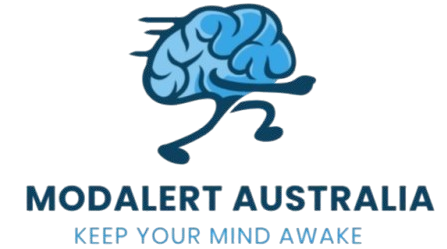Can You Wake Up A Narcoleptic Person?

Can you wake up a narcoleptic person? The chronic disorder narcolepsy affects your brain’s capacity to regulate the sleep-wake cycle. Narcoleptics experience daytime fatigue, sleep attacks, and, in rare cases, Cataplexy, a loss of muscle strength triggered by intense emotions. A common question is, “Can you wake up a narcoleptic person”?
Answers are more complicated than just a yes or no. The stage in which someone is sleeping, their severity, and any external stimuli can all affect whether they wake up. This blog explores the science of Narcolepsy and sleep cycles, as well as the difficulties in waking someone with this disorder.
You’ll understand Narcolepsy better after reading this article.
Understanding Narcolepsy
What Is Narcolepsy?
The sleep disorder Narcolepsy causes Excessive Daytime Sleepiness (EDS) and disturbed sleep patterns. Unlike standard sleeping patterns, in which individuals move through different stages of sleep (light sleep/deep sleep/REM), people with Narcolepsy may experience fragmented or interrupted sleep.
Symptoms of Narcolepsy
Primary symptoms of the disease include:
- Excessive Daytime Sleepiness (EDS): Consistent sleepiness regardless of how much sleep a person receives at night.
- Sleep Attacks: Sleeping suddenly and uncontrollably, even during activities.
- Cataplexy: A sudden muscle weakness caused by an emotion (e.g., laughter, surprise, or anger).
- Sleep Paralysis: When waking or falling asleep, you may be temporarily unable to speak or move.
- Hypnagogic/Hypnopompic Hallucinations: You may experience vivid dreams while falling or waking.
- Disrupted Nighttime Sleep: Frequent awakenings in the middle of the night.
Causes and Risk Factors
Research suggests that the exact cause of Narcolepsy has not been fully determined.
- Low hypocretin levels (orexin): The neurotransmitter regulating wakefulness.
- Autoimmune factors: Hypocretin neurons may be attacked by the immune system.
- Genetic predisposition: Certain genes can increase susceptibility.
- Environmental triggers: Trauma or infections may be involved.
A deficiency in hypocretin, a neurotransmitter that regulates wakefulness, is the cause of Narcolepsy. The result is a disruption of the sleep-wake cycle.
Sleep Architecture in Narcolepsy
Narcoleptic sleep vs. Normal sleep cycles
A person’s sleep cycle is typically divided into:
- NREM Stage 1 (Light Sleep)
- NREM Stage 2 (Deeper Sleep)
- NREM Stage 3 (Deep Sleep/Slow-Wave Sleep)
- REM Sleep (Dreaming Stage)
In Narcolepsy:
- The REM stage begins within minutes after falling asleep, not 90 minutes.
- Transitions from REM sleep to wakefulness are frequent.
- Sleeping less deeply, resulting in non-restorative rest.
REM Sleep Intrusion
Narcoleptics often have:
- When falling or waking, vivid dreams or hallucinations can occur.
- When a person wakes up, they may find it hard to move.
Can You Wake a Narcoleptic Person?
Factors Affecting Wakefulness
- Sleep Stage: Wakefulness is more difficult in REM or deep sleep. They may be disoriented if they wake up in REM sleep (as is common in Narcolepsy because of disrupted sleep patterns).
- Severity of Narcolepsy: Type 2 patients (without Cataplexy), on the other hand, may have a harder time waking up than those with Type 1. They may have a harder time waking up during a sudden sleep episode.
- External Stimuli: You can help by using loud noises, a physical touch, or bright lights.
- Individual Differences: Others may require stronger stimulation to wake them up.
Challenges in Waking Someone with Narcolepsy
- Sleep Inertia: Extreme sleepiness that lasts for minutes or hours.
- Automatic Behaviors: A person can appear awake but still in asleep. While partially asleep, some people continue to do things (like driving or talking), making it difficult to determine if they are awake.
- Cataplexy Episodes: They may not be able to react if triggered.
- Deep Sleep Episodes: You may find it difficult to awaken them if they have entered a deep sleep.
Techniques to Help Wake a Narcoleptic Person
- Gradual Awakening: The alarm will increase in volume.
- Physical Stimulation: You can tap lightly or shake hands.
- Bright Light Exposure: Wakefulness can be signaled by natural or artificial lighting.
- Structured Routine: Consistent sleep/wake time improves alertness.
How Do Narcoleptic People Wake Up Naturally?
While some narcoleptics may wake up after taking a nap of 10-20 minutes, others will sleep longer if they are not disturbed.
Living with Narcolepsy: Coping Mechanisms and Treatments
Treatments can help with symptoms, even though there is no cure.
Medical Treatments
- Stimulants (Modafinil, Methylphenidate): Encourage waking up.
- Sodium Oxybate (Xyrem): Reduces sleepiness during the day and improves sleep at night.
- Antidepressants (for Cataplexy): Venlafaxine and fluoxetine are examples.
- SSRIs/SNRIs: Help with Cataplexy.
-
Modalert 100 Mg (Modafinil)
$81.12 $390.00Price range: $81.12 through $390.00 -
Modafil Md 200 Mg (Modafinil)
$65.00 $274.00Price range: $65.00 through $274.00 -
Buy Modafinil 400 Mg
$156.00 $811.20Price range: $156.00 through $811.20 -
Modalert 200 Mg (Modafinil)
$115.00 $550.00Price range: $115.00 through $550.00
Lifestyle Adjustments
- Scheduled Naps: Take short (15-20 minute) naps to fight sleepiness.
- Sleep Hygiene: No screens, dark rooms, and a consistent sleep schedule.
- Diet & Exercise: Before bed, avoid caffeine and heavy meals.
Support Systems
- Therapy/Counseling: Stress management is made easier with this product.
- Support Groups: Share your experiences.
Best Practices for Waking a Narcoleptic Person
Follow these steps to help you wake up someone who has Narcolepsy:
Gentle Methods:
- Call Their Name: Begin with a gentle voice.
- Light Touch: The shoulder is gently shaken.
- Increase Light Exposure: Turn on the lights or open the curtains.
Stronger Stimuli (If Needed):
- Loud Noise: Clapping is a form of alarm.
- Cold Sensation: Use a dampened cloth to wipe the forehead.
- Movement: Sit them up.
What NOT to Do:
- Avoid Sudden Shaking or Shouting: It can be confusing or cause distress.
- Don’t Startle Them: Cataplexy can occur in some instances.
Myths and Misconceptions about Narcolepsy
Myth: Narcoleptics are just lazy.
Fact: This is a neurological disorder and not laziness.
Myth: Narcolepsy only involves falling asleep randomly.
Fact: This includes disrupted hallucinations, nighttime sleep, and Cataplexy.
Myth: You can’t wake a narcoleptic person.
Fact: You can wake them, depending on their sleep state.
Myth: They can control their sleep attacks.
Fact: Involuntary sleep episodes can occur.
Myth: Narcolepsy is rare.
Fact: It is often misdiagnosed and affects approximately one person every 2,000.
When to Seek Medical Help
If someone with Narcolepsy:
- You cannot be awakened for an extended period
- Experienced breathing difficulties during sleep
- Severe episodes characterize Cataplexy
For adjustments to your treatment, consult a specialist in sleep medicine.
Conclusion
It is possible to wake a person with Narcolepsy, but it can be difficult due to the disrupted cycles of sleep and sleep inertia. It is essential to understand the complexities of Narcolepsy to provide better support. Individuals with Narcolepsy who receive the proper treatment and adjust their lifestyle can live fulfilling lives.
Consult a specialist in sleep medicine if you or anyone you know suffers from Narcolepsy. To manage this condition successfully, you need to be aware and educated.









